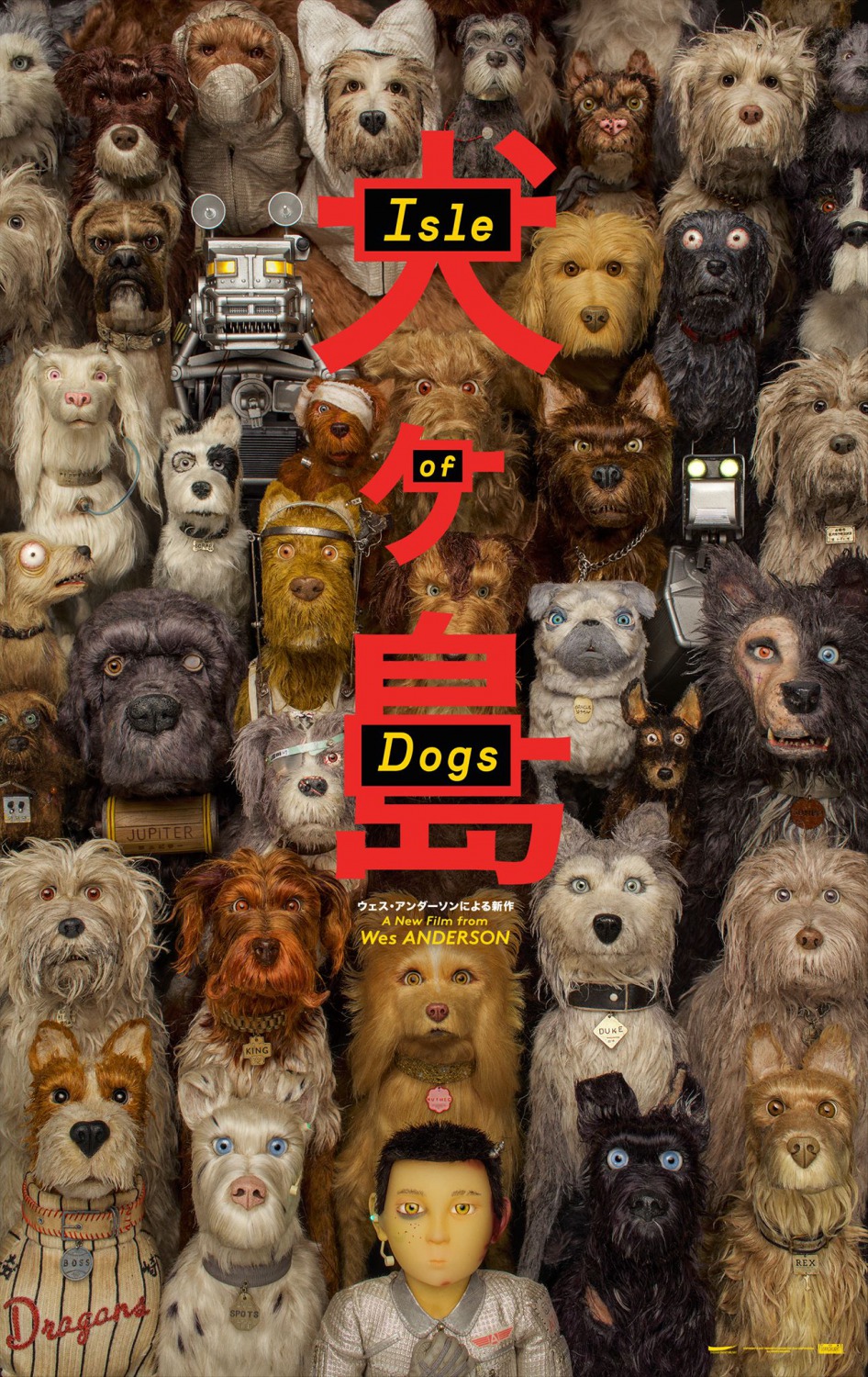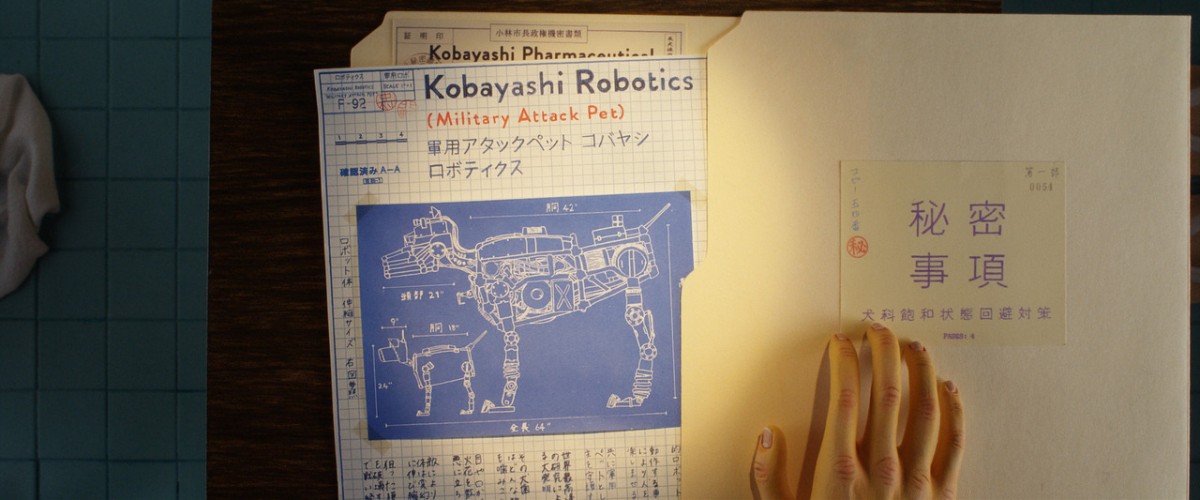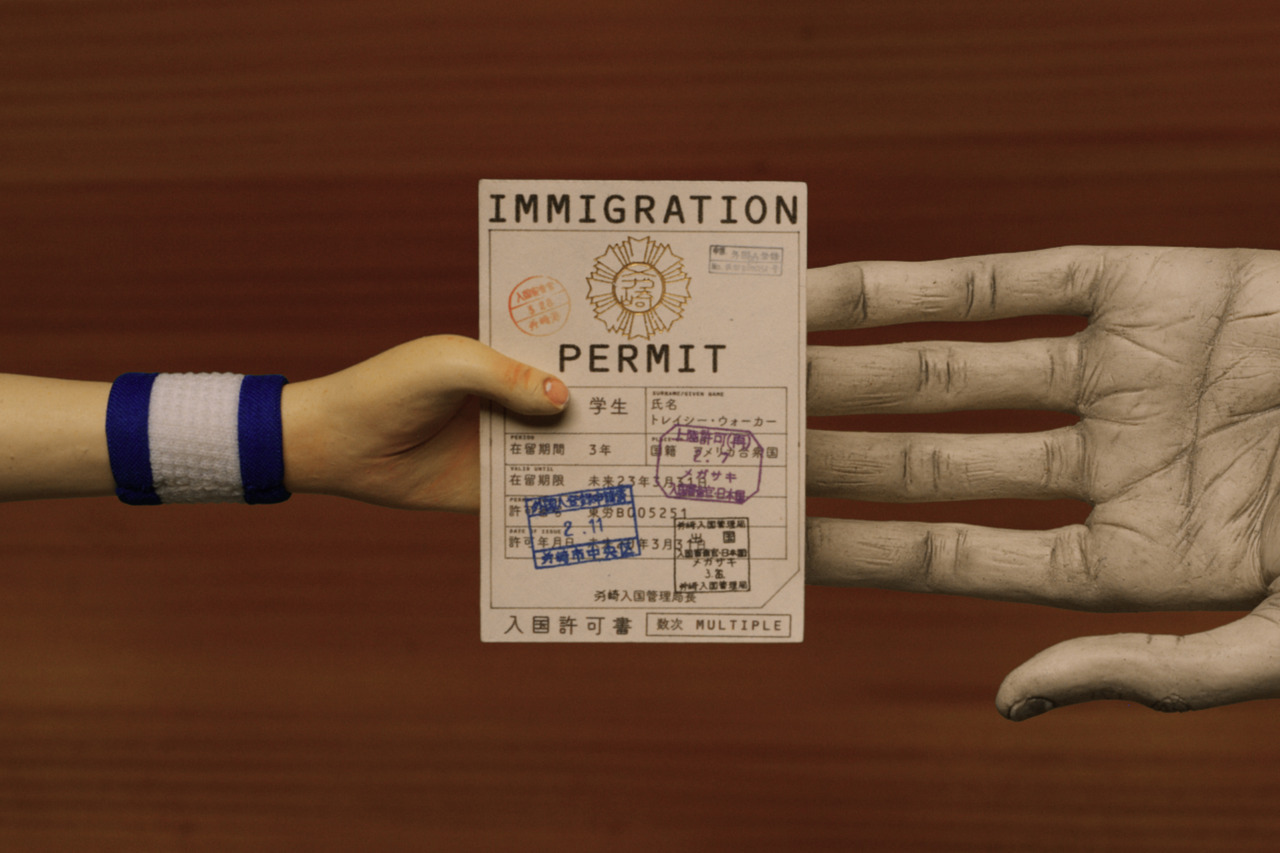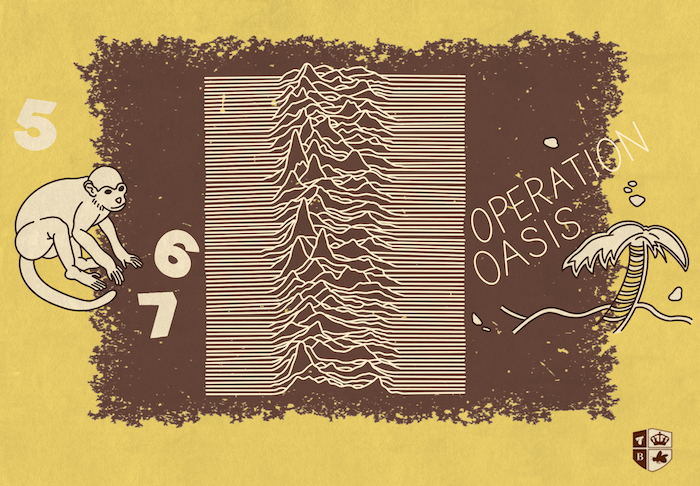Designing an Isle (of Dogs)
There are few things I cherish more than waking up on Saturday morning, getting brunch, and following up with a midday movie. I’m a huge proponent for reserved seating, so I adamantly select what I’m going to see the night before.
I can’t recall a time that I’ve been more captivated by a film’s movie poster than when I first saw one for Isle of Dogs hanging in the lobby of my go-to theater. The dogs alone were enough to draw me in, but what really caught my eye was the simple, typographic marriage of English and Japanese characters. The title’s bold, red Japanese type instantly sucks you in. Upon closer inspection, you can see the English title, perfectly nestled into the Japanese characters.

It was a given that I planned to see the movie, and, by sheer coincidence, I was able to get into an advanced screening. At the beginning of the film, you’re immediately greeted with familiar yellow typography accompanying columns of Japanese characters. More often than not, if a movie has any sort of subtitles they suck. They’re slapped on in some trendy sans serif or shoved to the bottom of the screen, barely legible. This just isn’t the case with Isle of Dogs. Every piece of English typography bolsters the Japanese text it’s translating. No, I can’t read Japanese, but I sure do appreciate the careful articulation of the characters.

You’re continually presented with these English/Japanese pairings throughout the film. Though I soon realized the seamless branding ran much deeper than a few well-done marketing materials. Wes Anderson, the director, brought on Erica Dorn to spearhead the design. Not only an incredible designer, Erica also grew up in Japan and fluently speaks Japanese, a must to accurately depict Megasaki City.


With Isle of Dogs being a stop motion film, every single prop had to be physically created at miniature sizes—everything from the design of important plot devices like the Puppy Snaps dog treats to shop signage to what the wallpaper looked like. Some of my favorite pieces are the schematics for the robotic attack dogs and Tracey’s investigation wall. Every single piece is informed by a strictly established aesthetic that transports you into a carefully-built world.



It’s no secret that an immense amount of work goes into any sort of film, even more so for a stop motion one. However, only when we take the time to closely examine this work do we notice it’s so much more than just puppets. Isle of Dogs doesn’t only take you to a believable, fictitious world, but it makes you want to stay in Megasaki City just a little bit longer.
What did you think of Isle of Dogs? Do you have any other favorite examples of extremely detail-oriented world building (other than Wes Anderson, of course)? Let us know if you do in the comments.
All images supplied by Erica Dorn © Fox Searchlight Pictures.
Easter Eggs Can Delight Your Audience
Your Brand’s Website Has Literally Never Been More Important
A Creative's Guide to Collaboration










